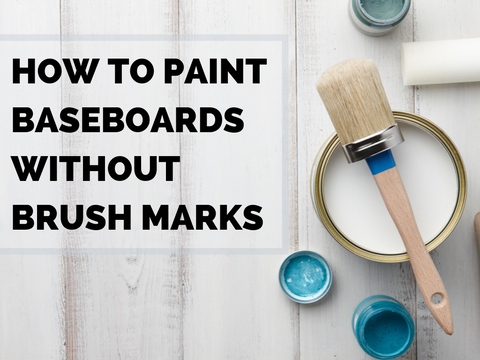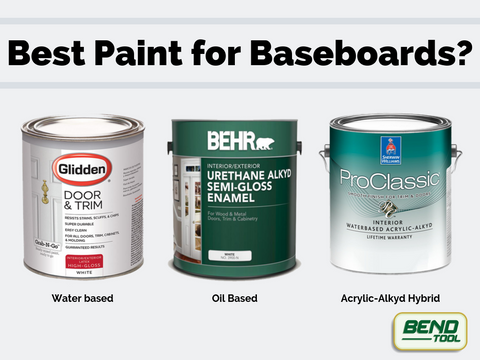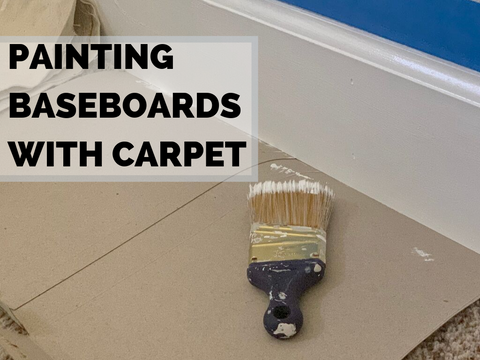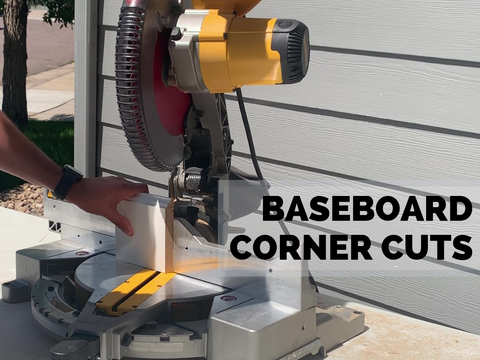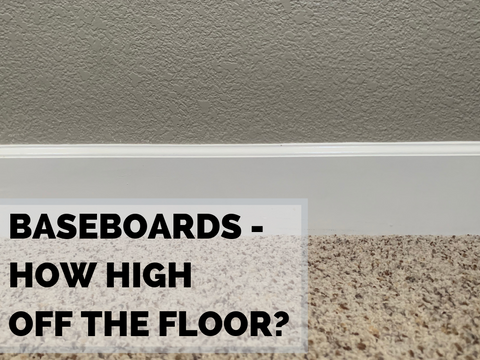For most of us, choosing baseboard for our home is no small task. Knowing it will be a permanent fixture of the house, we agonize over different looks, ensuring it will not collide visually with different furnishings and objects. An unlimited amount of options exists for baseboard, and you can narrow down your choices in many ways.

Why Do I Need Baseboard?
In most homes, baseboard protects the walls, catches dirt, and hides imperfections of the floors and walls. In addition to practical reasons, baseboard creates the foundation of the wall and can be the first part of trim the eye catches, creating a focal point for the room’s finish details.
Choosing Baseboard Looks
-
Profiled
-
Three-piece
-
Clamshell
-
Single-piece classic
Because baseboard or millwork can be milled out of wood, there is an endless supply of options to choose from. At a high level, most options will breakdown into the following categories.
Profiled: Most offer a beveled, curved, or beaded look near the top of the baseboard; some are more complex or intricate than others. These can be custom-manufactured or picked from a wide selection at a local home center.
Square/Classic: Square baseboard consists of a boxed look, instead of a profile or any sort of bevel design.
Traditional Three-Piece: A three-piece design combines a base cap (cap molding) and shoe molding (quarter-round) with a solid board to create an assembled baseboard. Historically, it is less expensive to assemble a three-piece molding set than to purchase a custom profiled one-piece option.
Clamshell: Most common in 3¼’’ baseboard sizing. Clamshell is a consistent looking option that has a curve instead of a pronounced bevel, or bead, at the top.
Not all profiles are readily available in every height. Contact a home center or manufacturer for details.
Choosing Baseboard Material
Most homeowners choose between medium density fiberboard (MDF), wood, or PVC for their baseboard materials. Each option offers different benefits:
MDF: Is the least expensive of the options and is available in most styles and profiles. MDF is preferable for painting as they are purchased pre-primed.
Wood: The most traditional option, prices can vary greatly. When selecting certain types of wood (e.g., Walnut, Oak), they can be stained to provide a traditional wood look. However, wood can be cost-prohibitive when compared to MDF or PVC.
PVC: Available in many styles, although in most cases not as durable as other options. Commonly used in rooms that could come in contact with water (e.g., Laundry or Mudroom) as PVC is non-water absorbent.
For more information, check out our articles What material is best for baseboards? and What type of wood is used for baseboards?
Choosing Baseboard Height

Most home centers sell baseboard in 3 inches or 5 inches or 8-inch heights. However, any design is possible. The baseboard can be taller, or even shorter than any of the retail options. Height can be challenging to determine and ultimately depends on the rooms and surroundings it will be installed in. You must determine the factors that need to be considered, here is a list to start with:
Height of your Walls: Most walls are at least 8’ in height, but some can be 10’, 12’ 16’ or higher.
Size of your Crown Molding: Depending on the design, a built-up crown molding can easily range from 6 inches to 8 inches. Crown molding is frequently used in smaller rooms with bold trim, as it helps create a larger look.
Location (height) of Chair Railing: Most chair railing runs between the height of the chair (30 inches – 36 inches) or higher depending on the room and objective. Chair railing can transform the look of a room by itself, dividing the room into parts and directing attention to other trim and molding. Also consider picture rail height, if applicable.
Objects Baseboard Will Come in Contact With: Particularly an issue with taller baseboard. The baseboard can run into all sort of things like registers, electrical receptacles, plumbing, and cabinets, and of course, doors.
Personal Preference: Beauty is in the eye of the beholder. For most of us, there are no rules that govern our baseboard; we just want it to look good and not clash with the rest of the home.
For more information, check out our article How tall should baseboards be?
Choosing Baseboard Color
White and wood stains are the most common options, but they are not the only options. The look of wood stains can vary greatly depending on the wood and the stain used. Some options, like MDF, can only be painted and cannot be stained for a nice grain look.
When painting, consider poplar or MDF options. It is worth your time to test different finishes against wall colors and furnishings. The look of the baseboard can have many different appearances depending on if it was finished with semigloss, high gloss, eggshell, or flat (matte).
When staining (or varnishing, clear coating), or looking for a nice, wood look, try Oak, Walnut, or Cherry depending on how light or dark of stain you are looking for. For some woods, a clear coat will look great and works best. A clear coat maintains the look of the board while added a gloss finish the preserve the wood grain.
Finally, if you are repainting your entire house, you may want to consider a paint scheme. Popular options include neoclassic, monochromatic, and traditional.
Choosing Baseboard Based on Cost
Baseboard is measured in linear feet for both materials and installation costs. Linear feet is calculated by adding up the length in feet of all the walls in the room. For example, a 10’x10’ room might be 100 square feet, but for our purposes in linear feet, four 10’ walls will add up to 40 linear feet.
Most MDF baseboards can be purchased for less than $3.00/ft. Wood can range from $2.00/ft -$20.00/ft depending on quality. PVC also varies, but typically runs between $5-$10/ft.
Other Factors in Cost:
- For more detailed installations, custom millwork and manufacturing can be required. This is considered expensive and may also push out your timeline.
- Not all installers provide painting or finishing of the baseboard.
- Special areas, like stairs, odd angles, bullnose corners, may require an additional charge per location (e.g., 16 bullnose corners may be an additional $3.00/ea.)
Choosing Baseboard Style

If you are designing a home or looking to integrate your baseboard trim with an existing style, it helps to start with the period pieces. However, some extensive research on the styles or help from an experienced designer may ultimately be the best way to choose a style. For our purposes, period pieces are simply guidelines, and no exact rules need to be followed.
Look for the following in each period to coordinate with your baseboard:
Georgian, [1700 to 1780]: Known for thick profiles and columns. Heavy use of arches and other classical elements, like doorways using pilasters. Many classical details were featured on fireplaces.
Colonial [the Mid 1700s to early 1800s]: Borrowed from European roots and relied heavily on Georgian design. Fireplaces were the focal point of rooms, whitewash finishes were popular, and wainscoting was frequently used. In some interpretations, this includes simple baseboards.
Federal, [1780 to 1820]: Includes vertical proportions, eagle decoration, and pilasters around doors and fireplaces. Reminiscent of many of the buildings of the U.S. Federal Government.
Greek Revival [1820 to 1860]: Heavy use of columns and pedestals, large baseboard, Greek detailing, Greek key motif.
Victorian [1850 to 1910]: Most styles are very ornate with large, complex casings. They are used in houses with higher ceilings. Many uses include a baseboard, chair rail, and picture rail to create three individual areas.
Arts and Crafts/Bungalow [1900 to 1930]: Use wood tones, picture rails, tall wainscoting, and simple details. It is known to have many variations that represent its style.
Modern [mid-1900s to present]: Simple patterns and profiles, flat profiles, lack of ornate details. Height and size are used less.
*Neoclassical style can include Georgian, Federal, or Greek Revival.
What Else to Consider for Installing Baseboard
Your current look, if you have one: modern, classic, carpet, or wood flooring, you will want your baseboard to add aesthetic value to your home instead of clashing with existing objects.
Existing trim: consider your crown molding, window, and door casings, some looks just won’t jive with what you already have.
Who is installing the baseboard: professionals have more experience installing complex profiles and larger sizes.
The layout of the home: rounded bullnose corners, 135-degree angles, 60-degree angles, or other considerations may limit materials options or require the purchase of additional pieces, and custom build.
Save some pieces: If possible, save a scrap from your baseboard project for possible repairs in the future. Baseboards contain subtle nuances, especially milled boards, from run to run. This is helpful if one of your baseboards is damaged and needs to be replaced. In some cases, even when the baseboard is the same model, the new board might not exactly match the existing one.
Putting It All Together
Because so many options exist, it is difficult to put together a definitive process for choosing baseboard. If you are having difficulty, we recommend setting a budget (Costs), then starting with Looks and Style, and then Color. Narrowing down these options can potentially eliminate a materials decision (because only certain Materials may be available for your Style), and help guide the height decision. If your budget allows, you may also want to consider hiring a designer to help provide input.
Finally, most baseboard trim and other trim work are purchased through local home centers. However, for larger and more unique designs, consider a custom-millwork shop. Depending on your area, they can be found locally, but many offer online selections and orders.









